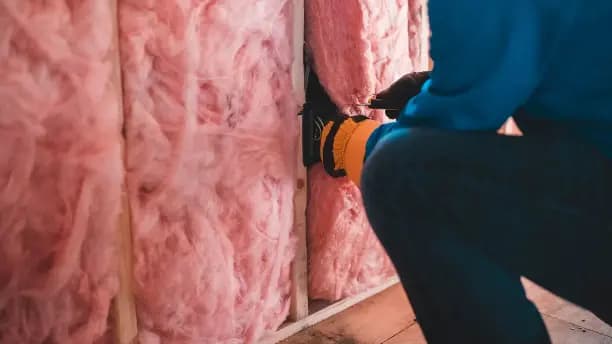How Long Do Timber Windows Last?
Are you wondering how long timber windows last compared to alternatives like aluminium? We explain and compare the lifespan of joinery materials here.
Condensation is a frustrating problem many homeowners face, causing damage, discomfort, and potential health risks. Understanding the root causes of condensation in your home and implementing practical solutions is vital for creating a healthier, more comfortable living environment. From implementing ventilation strategies to installingretrofit double glazing, we delve into helpful tips, techniques, and maintenance practices to help you combat condensation and maintain a dry, well-ventilated home. Following these steps, you can protect your property, enhance indoor air quality, and ensure a more enjoyable living space for you and your family.
Condensation occurs when warm, moisture-laden air meets cooler surfaces, resulting in the formation of water droplets. Excessive condensation in a home can cause adverse effects, such as:
Moisture accumulation can cause wood to rot, causing structural instability and compromising the integrity of your building. The excessive moisture can seep into drywall, causing it to become saturated and potentially leading to peeling paint, stains, and visible water damage. Condensation can also warp surfaces, such as wooden floors and furniture, making them prone to warping, swelling, and distortion. Over time, these issues can result in costly repairs and diminish the overall aesthetics of your home.
Excess moisture provides an ideal breeding ground for mould and mildew, posing significant health risks to you and your family. Mould spores released into the air can trigger allergies, respiratory problems, and other health issues, especially in individuals with asthma or weakened immune systems. Prolonged exposure to mould and mildew can lead to chronic sinusitis, coughing, wheezing, skin irritation, and even lung infections.
Condensation contributes to elevated humidity levels, creating an environment conducive to the proliferation of dust mites, bacteria, and other indoor pollutants. Dust mites can trigger allergic reactions and worsen asthma symptoms, while bacteria and viruses that thrive in moist environments can increase the risk of respiratory infections. Excessive moisture can create a musty odour, making the indoor environment unpleasant and uncomfortable, leading to poor air quality and a generally unhealthy living environment.
Various factors contribute to condensation issues, including high humidity levels, inadequate ventilation, temperature differentials, and poor insulation. Here are some ways you can combat condensation in your home.
Open the windows when weather conditions permit to increase airflow and reduce moisture build-up. This allows fresh air to circulate, replacing humid indoor air with drier outdoor air. Additionally, use exhaust fans in bathrooms and kitchens to expel moisture at its source. These fans effectively remove steam and odours, preventing excess humidity from accumulating in these areas.
Consider installing mechanical ventilation systems such as whole-house fans or heat recovery ventilators (HRVs) for more comprehensive ventilation. Whole-house fans draw in fresh air from outside and expel stale air, promoting air circulation throughout your home. HRVs, on the other hand, not only provide fresh air but recover heat from the outgoing air, reducing energy loss. These mechanical ventilation systems ensure consistent air exchange, effectively controlling humidity levels and preventing condensation.
Controlling humidity levels is crucial in the fight against condensation in your home. One effective method is to use dehumidifiers in areas with high moisture levels. These devices extract excess humidity from the air, helping to maintain a balanced and drier indoor environment. Place dehumidifiers strategically in rooms where condensation occurs, such as basements, bathrooms, and laundry areas.
In addition to using dehumidifiers, minimise activities that release moisture into the air, such as drying clothes indoors or boiling water without proper ventilation. Instead, opt for outdoor drying or use a well-ventilated area for activities that generate steam. Proper ventilation during these activities can redirect moisture outside and prevent it from accumulating indoors, reducing the chances of condensation.

Adding insulation to walls, roofs, and floors can minimise temperature differentials and prevent condensation from forming on cold surfaces. Insulation acts as a barrier, reducing heat transfer and maintaining consistent temperatures throughout your home.
Retrofit double glazing is an effective method to enhance insulation and reduce condensation. It involves installing windows with two layers of glass separated by a layer of air or gas. This design significantly reduces heat transfer through the windows, preventing the formation of cold surfaces where condensation can occur. Double glazing also improves energy efficiency by minimising heat loss, providing additional benefits beyond condensation prevention.
Take care to seal any air leaks around windows and doors, as they allow warm, moisture-laden air to infiltrate your home. By sealing these leaks and reinforcing insulation around windows and doors, you create a tighter building envelope, reducing air exchange and minimising the chances of condensation forming.
By implementing the practical tips, techniques, and maintenance practices discussed in this blog, you can create a healthier, more comfortable living environment for you and your family. Bungalow retrofit double glazing is a proven method to improve insulation, minimise heat transfer, and eliminate condensation in your home. Say goodbye to condensation and enjoy a drier, more comfortable home. Act today and reach out to Atlas Glass for a free consultation.
Are you wondering how long timber windows last compared to alternatives like aluminium? We explain and compare the lifespan of joinery materials here.
Window painting is a great way to exercise creativity or gather the kids for fun activities. This blog post covers how to paint glass windows for great results.
As specialists in retrofit double glazing in Auckland, we know how much small renovations can enhance the quality and comfort of a home. Today, we explore a range of handy ideas for enhancing your house appeal. Read on to discover how to add value to your home. 1. Boost Curb-Side Appeal When thinking about home […]